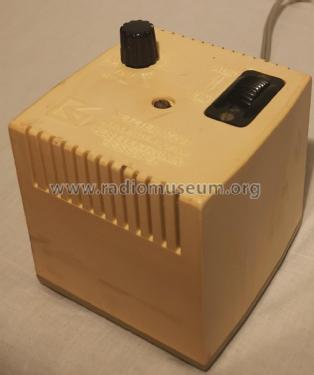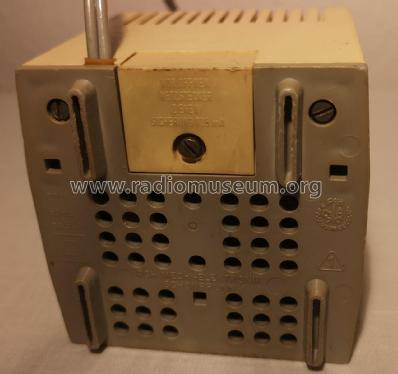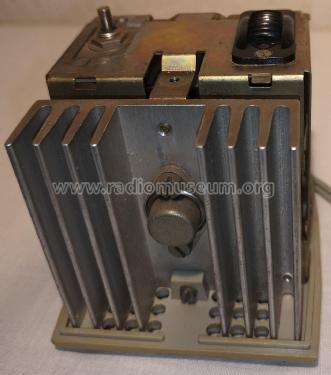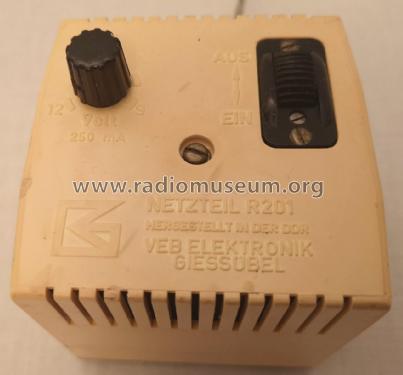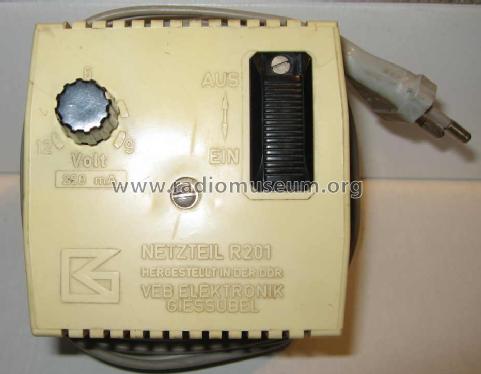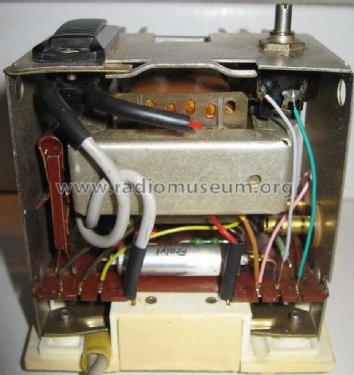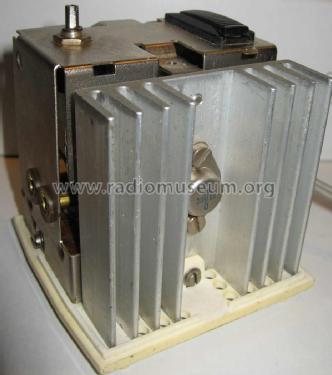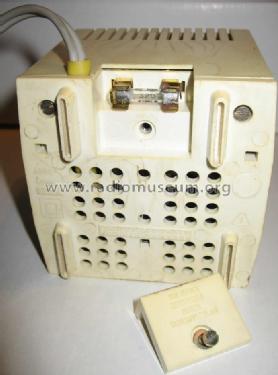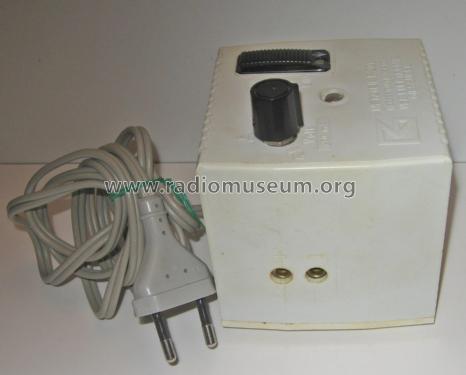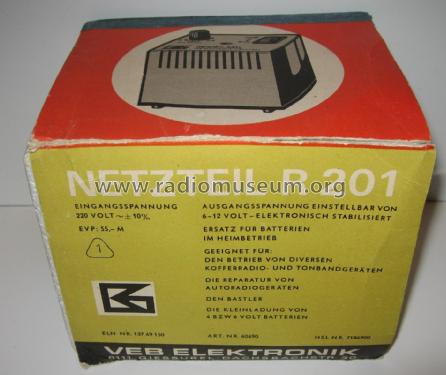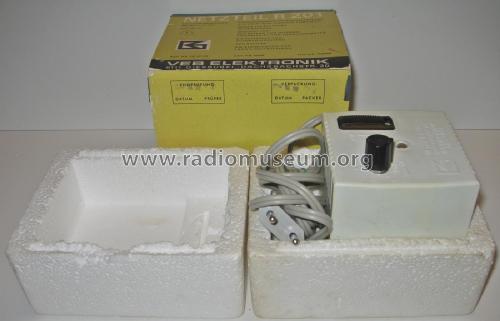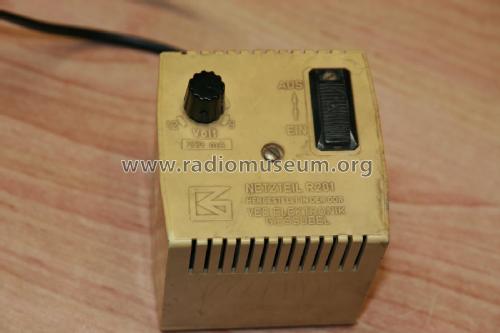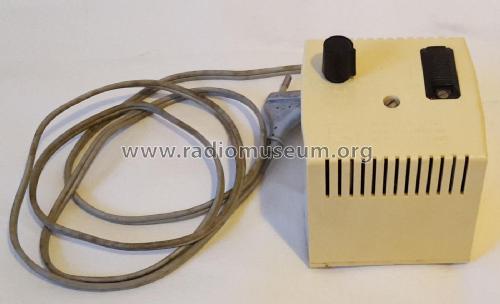Netzteil R 201
Elektronik Gießübel, VEB; /Thür. (Ostd.)
- Country
- Germany
- Manufacturer / Brand
- Elektronik Gießübel, VEB; /Thür. (Ostd.)
- Year
- 1975 ??
- Category
- Power supply/conditioner or battery or charger
- Radiomuseum.org ID
- 235087
- Number of Transistors
- 2
- Wave bands
- - without
- Power type and voltage
- Alternating Current supply (AC) / 220 Volt
- Loudspeaker
- - - No sound reproduction output.
- Material
- Plastics (no bakelite or catalin)
- from Radiomuseum.org
- Model: Netzteil R 201 - Elektronik Gießübel, VEB; /
- Shape
- Tablemodel, with any shape - general.
- Dimensions (WHD)
- 82 x 99 x 81 mm / 3.2 x 3.9 x 3.2 inch
- Notes
-
Regelnetzteil 6, 9, 12 V markiert, stufenlos regelbar in diesem Bereich, max. Stromentnahme 250 mA, Leistungsaufnahme ca.9 VA, Feinsicherung T 35 mA im Gehäuseboden.
Regelbare Ausführung des Modells N200.
- Net weight (2.2 lb = 1 kg)
- 0.651 kg / 1 lb 6.9 oz (1.434 lb)
- Price in first year of sale
- 55.00 Mark
- Mentioned in
- Sortimentskatalog Elektroakustik (DDR, 1976)
- Author
- Model page created by Michael Mischke. See "Data change" for further contributors.
- Other Models
-
Here you find 9 models, 9 with images and 4 with schematics for wireless sets etc. In French: TSF for Télégraphie sans fil.
All listed radios etc. from Elektronik Gießübel, VEB; /Thür. (Ostd.)
Collections
The model Netzteil is part of the collections of the following members.
Forum contributions about this model: Elektronik Gießübel,: Netzteil R 201
Threads: 1 | Posts: 1
Ausgangspunkt
Die Spannung ließ sich am Poti nicht richtig einstellen, manchmal sprang sie sogar direkt auf Maximalspannung.
Reparatur
In der Annahme, dass es sich um ein verschmutztes bzw. korrodiertes Potentiometer handelte, demontierte und zerlegte ich es in seine Einzelteile. Dabei kam zum Vorschein, dass die Verbindung zum Schleiferring unterbrochen war und nur noch sporadisch Kontakt gab.
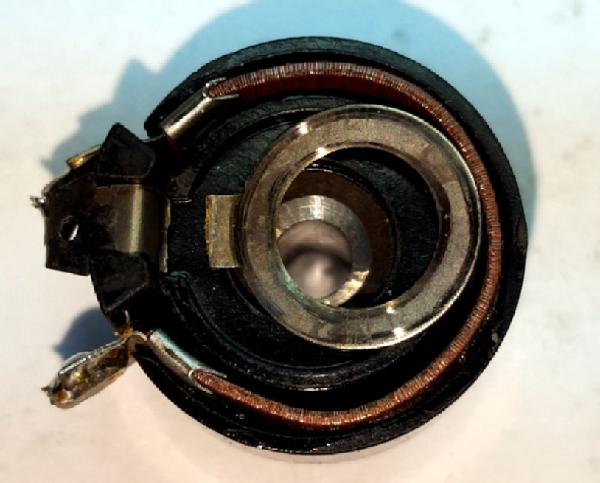 |
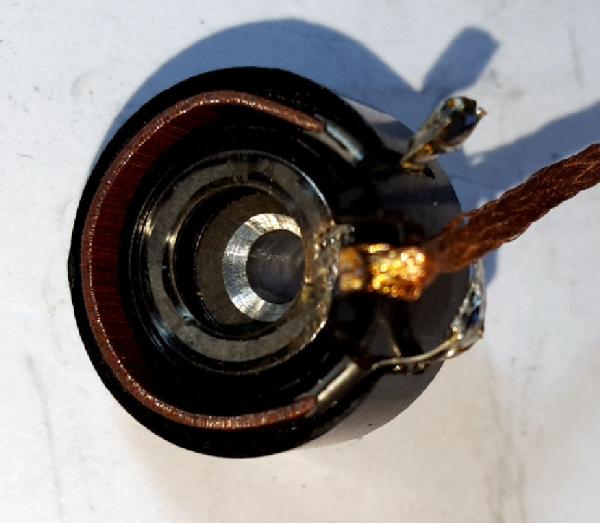 |
Um eine etwas flexible Verbindung herzustellen, die dem Druck des Schleifer auch etwas nachgeben konnte, lötete ich an den Ring ein Stück Entlötlitze an und verhinderte dabei mit einer Zange, dass sie sich mit Zinn vollsaugt und steif wird. Dann baute ich das Poti wieder zusammen, in das Netzteil ein und schloss die Litze zusammen mit dem Draht an der mittleren Lötöse an.
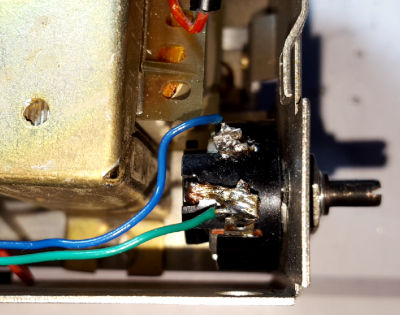
- Erik Schanze
Erik Schanze, 05.Mar.22
